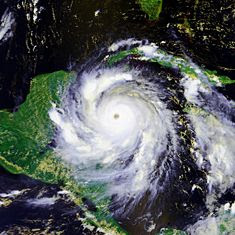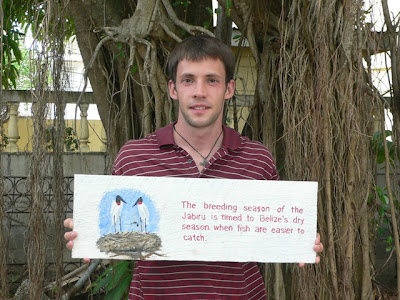This year marked the 10th anniversary of La Ruta Maya Belize River Challenge, the longest canoe race in Central America. La Ruta Maya is a four-day canoe race along the Macal and Belize Rivers, once a major trading route of the Mayas. Starting in San Ignacio under the historic Hawksworth Bridge (the only suspension bridge in Belize), the race covers 170 miles before reaching the Belcan Bridge in Belize City. San Ignacio, in western Belize, was an important center for the Baymen (British loggers) and chicleros (collectors of chicle, which is used to make chewing gum), who also relied on the river to transport their goods.
“With the spirit of competition and the promise of high adventure, the challenge is hereby cast to any and all hardy souls throughout Belize and the world, who dare to take up the quest for victory and pursue the adventure of a lifetime on the Belize Old River.”
This year 93 teams, each consisting of three paddlers, competed for the adventure of a great race or a chance to the win “Kinich Ahau” Trophy among the serious competitors. Kinich Ahau (the sun god) is a national treasure that was discovered at the Altun Ha ruins in Belize, to date it is the largest jade carving found in any Maya country.
I had been prepared for the challenge mentally ever since last year when I first heard of the race during pre-service training. I registered a team (myself and two other Peace Corps Volunteers) but we still were without a canoe in late February. Thankfully, a co-worker from Belize Audubon Society was able to secure a canoe from a friend in Burrell Boom. And by good grace, another co-worker happened to have a meeting in Benque (just west of San Ignacio) the day before the race, otherwise we had no way of transporting the canoe. But that wasn't the last of our worries, before leaving Belize City I learned that one of my team members was sick and couldn't race. When I reached Cayo the news was confirmed, so we recruited a member from our support crew to fill the spot. At last the our team, Peace Corps Northmen, was complete. Northmen were voyageurs who had passed a winter in the North; also a reference to the Vikings (our team had two Minnesota natives and coincidentally our newest member once lived there).
March 9, 2007 (Day 1) San Ignacio to Banana Bank (49 miles)
We spent the night at another Volunteer's house and started carrying our canoe early before the race. It would have been very tiring, however we were able to hail a truck that was willing to help transport our canoe across town to the start of the race.
Under the stillness of a cool misty morning in the foothills of the Maya Mountains, the canoes packed behind the starting line anxious for the race to begin. The race was off in a mad dash, which caused a few canoes to turn over. We had a sturdy craft and were not worried about swamping. The lightweight racing canoes that had maintained their balance at the start flew down the river like an arrow, far out of sight. The competition slowly spread out and we settled into a pack of about five canoes.
 Photo by PCV Jerry Wagner
Photo by PCV Jerry Wagner
Seated at the stern I navigated our canoe around the bends and through the rapids. The scenery along the river was beautiful - lush green forest, bird songs, parrots flocking overhead, howler monkeys calling in the distance. There are hardly any signs of development along the river - a few farms and small communities, families shouting words of encouragement to the racers, women doing laundry against the rocks, and children swimming.
It was a very long day that seemed to never end. We asked spectators how much further we had to go when it seemed like we were nearing the end; three miles we were told. About an hour later we got the same answer, three miles. Later someone shouted only 20 minutes to the Banana Bank, which also turned out to be an hour. Finally, we received a positive answer from a support boat, just 15 minutes. We sprinted towards the finish of stage one and soon heard bass booming music and the roaring crowd. Day one was over after paddling for 7 hours 20 minutes and 39 seconds.
A swim in the river was very refreshing at the end of the day.
March 10, 2007 (Day 2) Banana Bank to Bermudian Landing (60 miles)
 Another early start and a rush of excitement at the line (pictured left: our team in the white canoe; that's me in the blue hat & black shirt; a big up toJerry Wagner for the photos). The second day of the race was the longest stage and required a lot of endurance. We got a good rhythm going and the cohesion of our team improved. Seeing rapids ahead was a welcoming sight to me. The weather was cool and it rained during parts of the day.
Another early start and a rush of excitement at the line (pictured left: our team in the white canoe; that's me in the blue hat & black shirt; a big up toJerry Wagner for the photos). The second day of the race was the longest stage and required a lot of endurance. We got a good rhythm going and the cohesion of our team improved. Seeing rapids ahead was a welcoming sight to me. The weather was cool and it rained during parts of the day.
The highlight of the day for me was seeing a Central American River Otter sitting on the riverbank (only a few feet away as we passed by). I also identified birds for my teammates to help pass some time. We paddled along with another team of Peace Corps Volunteers for a while. Our dedicated support crew was waiting for us ahead and brought out much needed food and water. Our team re-charged with bananas, tortillas, peanut butter, Snickers, Gatorade, and lots of water.
On day two of La Ruta Maya we finished after 9 hours 25 minutes and 30 seconds.
March 11, 2007 (Day 3) Bermudian Landing to Burrell Boom (36 miles)
The start time was later in the morning and the extra hours of sleep were much needed. I had a good stretch before getting into the canoe, felt a little sore from the previous day but once I good my arms moving again I was feeling better. Lots of howler monkeys around Bermudian Landing (locally known as baboons). The river felt a slower, especially along the straight stretches of river. Starting to recognize the names of a few of the villages we passed. Day three finish- 5 hours 54 minutes and 45 seconds.
March 12, 2007 (Day 4) Burrell Boom to Belize City (25 miles)
The final day got off to a disappointing start. Seven minutes before the race a group the lead canoes made a false start because a person in the audience was blowing a whistle (even though the official starter was clearly shouting through a bullhorn how many minutes where left still the start time of 8:30am). We waited with a majority of the canoes as the officials tried to stop the race, eventually the starter shrugged his shoulders and said, "We can't stop them now." And off we went. After rounding the first bend a boat was cruising down river telling the teams to turn around for a re-start. We paddled back up river and waited in the shade as the rest of the canoes slowly returned, but not all of them. The official announced that the race would start again at 10:00am. I was very disappointed because I could tell the sun would be very hot. 10:00 and the 10:30 rolled around, still no sign of the leaders. Rumor was that they were getting towed back by a boat and needed recovery time. The race finally went off at 11:30AM.
We paddled hard on the final day and battled a strong headwind. Before reaching the sea the race course disappeared into a narrow canal. I felt like I was deep in the jungle, surrounded by mangroves. The canal widened after a few miles and we raced down the home stretch. I recognized buildings that I pass by on my way to work. After another mile the Belcan Bridge came into view. People along the banks of the canal were yelling for us to paddler faster. And at last we reached the finish line after about four hours of paddling. We had completed La Ruta Maya after four days, totaling 25 hours and 58 minutes sitting in our canoe. Our overall finish was 56th and 9th in the Mixed Division.






 Now I feel as if things are returning back to normal.
Now I feel as if things are returning back to normal.









 The month of May was an exciting time for Crooked Tree. The first week of May a Cashew Festival is celebrated by Crooked Tree Village. Before I came to Belize, I only new about the cashew nut, which I assumed grew on a tree like other nuts. However, a cashew has a fleshy fruit, and the nut hangs outside of the fruit.
The month of May was an exciting time for Crooked Tree. The first week of May a Cashew Festival is celebrated by Crooked Tree Village. Before I came to Belize, I only new about the cashew nut, which I assumed grew on a tree like other nuts. However, a cashew has a fleshy fruit, and the nut hangs outside of the fruit.


















 In the afternoon there was a field competition. The stadium was full and Prime Minister Said Musa was in attendance, while the bands stood in block formations for the opening ceremony. A bugle corps, Banda de Geurra, visiting from Mexico performed a traditional military-style show. After a few speeches the visiting bands played the national anthems for Honduras, Guatemala, and Mexico; Belize's national anthem was played by a DJ through the sound system. Shortly afterwards it started raining, which delayed the show for a while.
In the afternoon there was a field competition. The stadium was full and Prime Minister Said Musa was in attendance, while the bands stood in block formations for the opening ceremony. A bugle corps, Banda de Geurra, visiting from Mexico performed a traditional military-style show. After a few speeches the visiting bands played the national anthems for Honduras, Guatemala, and Mexico; Belize's national anthem was played by a DJ through the sound system. Shortly afterwards it started raining, which delayed the show for a while. The visiting bands, which did not compete, also put on great field shows. Their brass sections were large and in charge; especially the trumpets (that's my kind of marching band). And just when everyone was ready to go home, Instituto Evangelico Bethel started playing Bob Marley tunes and the whole crowd got on their feet and sang along. Check out more of the action on my Flickr photo album.
The visiting bands, which did not compete, also put on great field shows. Their brass sections were large and in charge; especially the trumpets (that's my kind of marching band). And just when everyone was ready to go home, Instituto Evangelico Bethel started playing Bob Marley tunes and the whole crowd got on their feet and sang along. Check out more of the action on my Flickr photo album.













